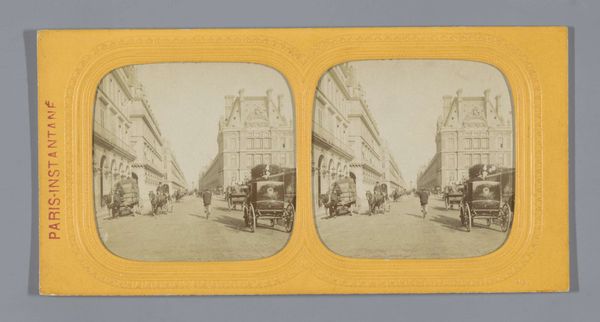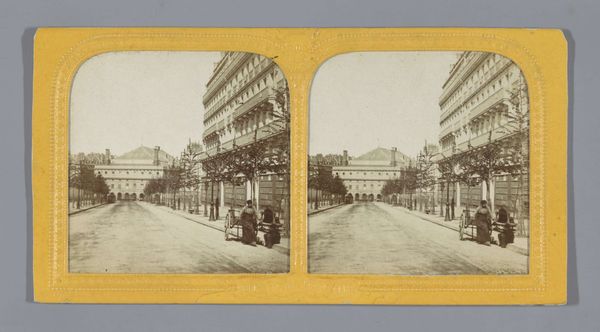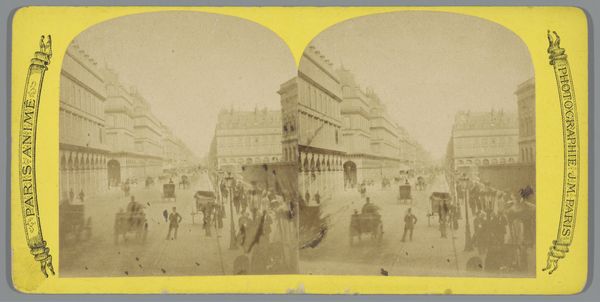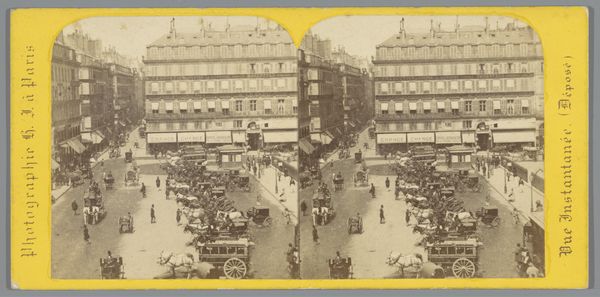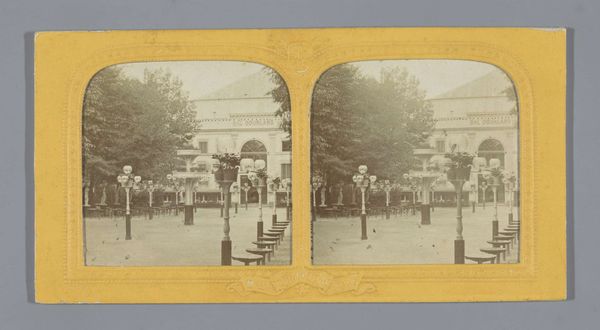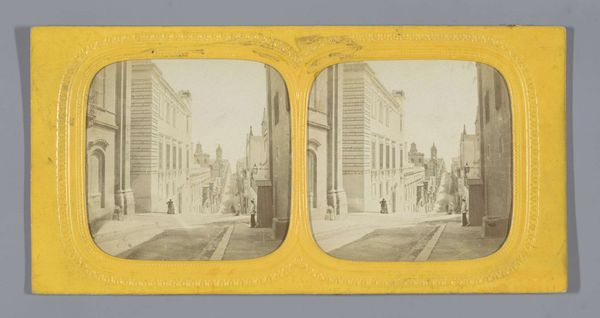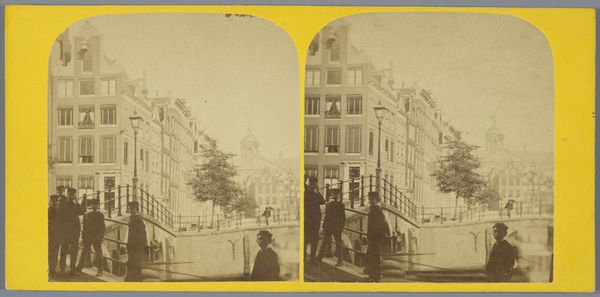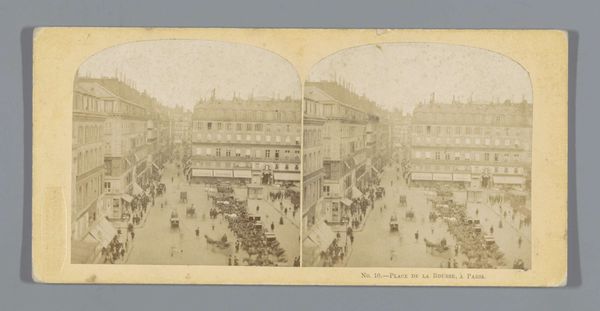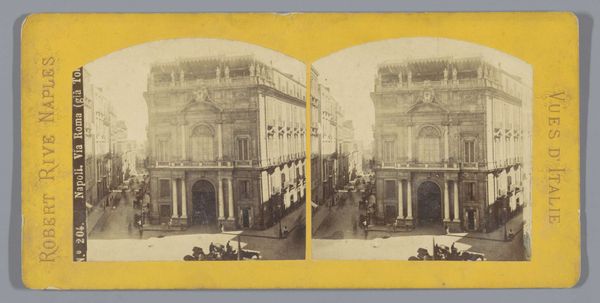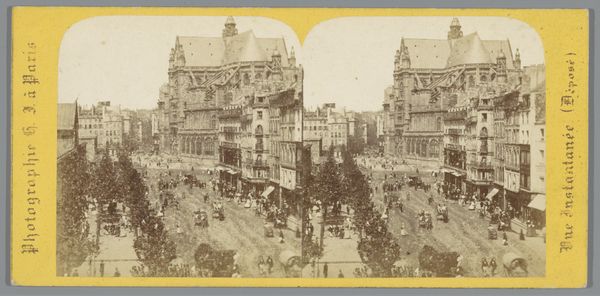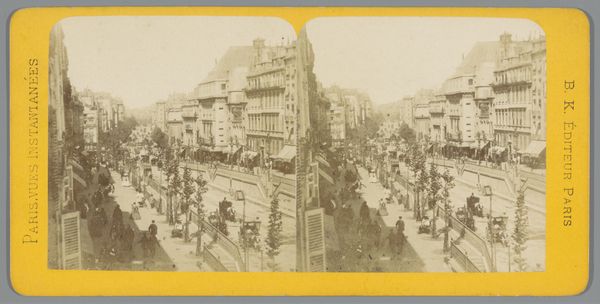
Dimensions: height 85 mm, width 170 mm
Copyright: Rijks Museum: Open Domain
Curator: This gelatin-silver print, "Gezicht op Oxford Street," likely taken between 1850 and 1880 by Valentine Blanchard, really captures a bustling moment. It has this subdued energy about it, doesn't it? Editor: Absolutely. There's something dreamlike, almost sepia-toned in its feeling. But what really hits me is the palpable social stratification embedded within. Look at the horse-drawn carriages – not just a mode of transport, but a blatant symbol of economic disparity navigating the very heart of the city. Curator: I agree. There's a melancholic beauty too. You almost feel as though the people in the photograph, caught forever in their routines, don't realize they are becoming a document of a long-lost age. The grainy texture lends the photograph such depth. Editor: That depth resonates profoundly. Consider how Blanchard’s work aligns with Pictorialism. It isn't just about representing reality; it is also an attempt to imbue photography with artistic expression. But I can't look away from what feels like an unconscious portrayal of labour within the photograph, the lower classes in motion, enabling the privileged's experience. Curator: A silent symphony of progress and power, isn't it? Blanchard, probably inadvertently, showed a society very much in transition, with industry nipping at its heels. The very air almost feels thicker. Editor: Exactly, and the ‘thick air’ you're sensing could almost be conceptualized as a suffocating reminder that Victorian London wasn't the jolly place so many paintings suggest. Pollution and the weight of its hierarchical systems literally fogged people’s existence, and Valentine’s choice of monochrome captures that rather elegantly. It highlights what's easily overlooked by those with a tendency toward sentimentalism. Curator: Indeed, the monochrome strips any rose-tinted illusions, doesn't it? You find yourself contemplating lives lived then in connection to lives led now – where did those carriages carry their passengers? Where did those laborers come from? A lovely piece. Editor: Yes, and what legacies of inequality do those Oxford Street corners still contain? Blanchard offers us, inadvertently perhaps, a Victorian gaze that speaks volumes about class, labour, and ultimately, about photographic vision's intersection with societal awareness. Curator: Wonderfully articulated.
Comments
No comments
Be the first to comment and join the conversation on the ultimate creative platform.
